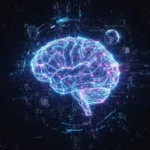
Sora 2: A Disturbing New AI Nightmare
New dangers emerge as Sora 2’s AI blurs ethical lines—discover what makes this digital phenomenon so unsettling before it’s too late.

Choosing the right machine learning algorithm for image classification depends on things like the size of your data and the computer power you have. Convolutional Neural Networks (CNNs) are popular, but options like Support Vector Machines and Random Forests can also work well. Each method has its own strengths and weaknesses. To learn more about how these algorithms compare, see the details below.

Although various machine learning models have been applied to image classification tasks, Convolutional Neural Networks (CNNs) remain the most widely used due to their ability to automatically learn spatial hierarchies of features from raw pixel data.
CNNs excel when combined with effective image preprocessing techniques, such as normalization and resizing, which enhance model performance. Their built-in feature extraction methods reduce the need for manual intervention, streamlining the classification process.
Support Vector Machines (SVMs) offer a robust approach to image classification, particularly in scenarios where the dataset is limited in size and the number of features is high.
SVMs excel by finding the ideal hyperplane that separates classes through margin maximization, enhancing generalization.
The kernel trick enables SVMs to handle non-linear data by implicitly mapping inputs into higher-dimensional spaces, improving classification performance.
Beyond SVMs, tree-based algorithms like Decision Trees and Random Forests offer interpretable and flexible solutions for image classification tasks.
Decision Trees provide high model interpretability by visually mapping decisions, yet they risk overfitting complex data.
Random Forests address this by combining multiple trees, enhancing accuracy and overfitting prevention.
These methods enable users to understand classification logic, making them valuable when transparency is essential in model selection.
K-Nearest Neighbors (KNN) is a straightforward, non-parametric algorithm frequently applied to image classification problems.
It bases predictions on the closest data points, relying on distance metrics like Euclidean distance to measure similarity. While simple to implement, its classification accuracy can be sensitive to noise and dataset size.
Architectures like Deep Residual Networks (ResNets) have redefined image classification by enabling the training of exceptionally deep neural networks without suffering from vanishing gradients.
Central to ResNets is residual learning, where layers learn modifications to inputs rather than direct mappings. Skip connections allow gradients to flow more easily through the network, improving convergence and accuracy.
This innovation has set new benchmarks in image classification performance across many datasets.
Building on the success of deep architectures like ResNets, transfer learning has become a powerful strategy in image classification tasks.
By harnessing pre-trained networks, practitioners can use feature extraction or fine tuning models to achieve remarkable accuracy even with limited data.
Among the diverse strategies for boosting image classification performance, ensemble methods stand out by combining predictions from multiple models to mitigate individual weaknesses. Bagging techniques, such as Random Forests, reduce variance by aggregating outputs from various learners. Boosting methods like AdaBoost focus on correcting errors of previous models, enhancing accuracy. The following table summarizes common ensemble approaches:
| Ensemble Type | Key Benefit |
|---|---|
| Bagging | Reduces variance |
| Boosting | Improves accuracy |
| Stacking | Combines strengths |
| Voting | Majority decisions |
| Blending | Flexible integration |
Selecting the best machine learning algorithm for image classification depends on dataset size, complexity, and specific project requirements. Convolutional Neural Networks and Deep Residual Networks offer state-of-the-art performance for large, complex datasets, while Support Vector Machines, Random Forests, and K-Nearest Neighbors remain effective for smaller or simpler tasks.
Transfer learning and ensemble methods further enhance classification accuracy, making it essential to align algorithm choice with the unique demands of each image classification project.

New dangers emerge as Sora 2’s AI blurs ethical lines—discover what makes this digital phenomenon so unsettling before it’s too late.

Learn how virtual reality and artificial intelligence diverge in purpose, interaction, and potential—discover the surprising differences that could shape your future decisions.

Peering into healthcare algorithms, discover the powerful techniques that make their decisions transparent—what methods truly reveal the logic behind the predictions?

Curious about how artificial intelligence is changing healthcare for the better? Discover the key advantages that could revolutionize patient care next.

Amidst advances in medicine, ethical issues in healthcare spark debate—discover which dilemmas are shaping the future of patient care next.

Learn how automation is transforming modern manufacturing and uncover the surprising challenges that could reshape the industry’s future.